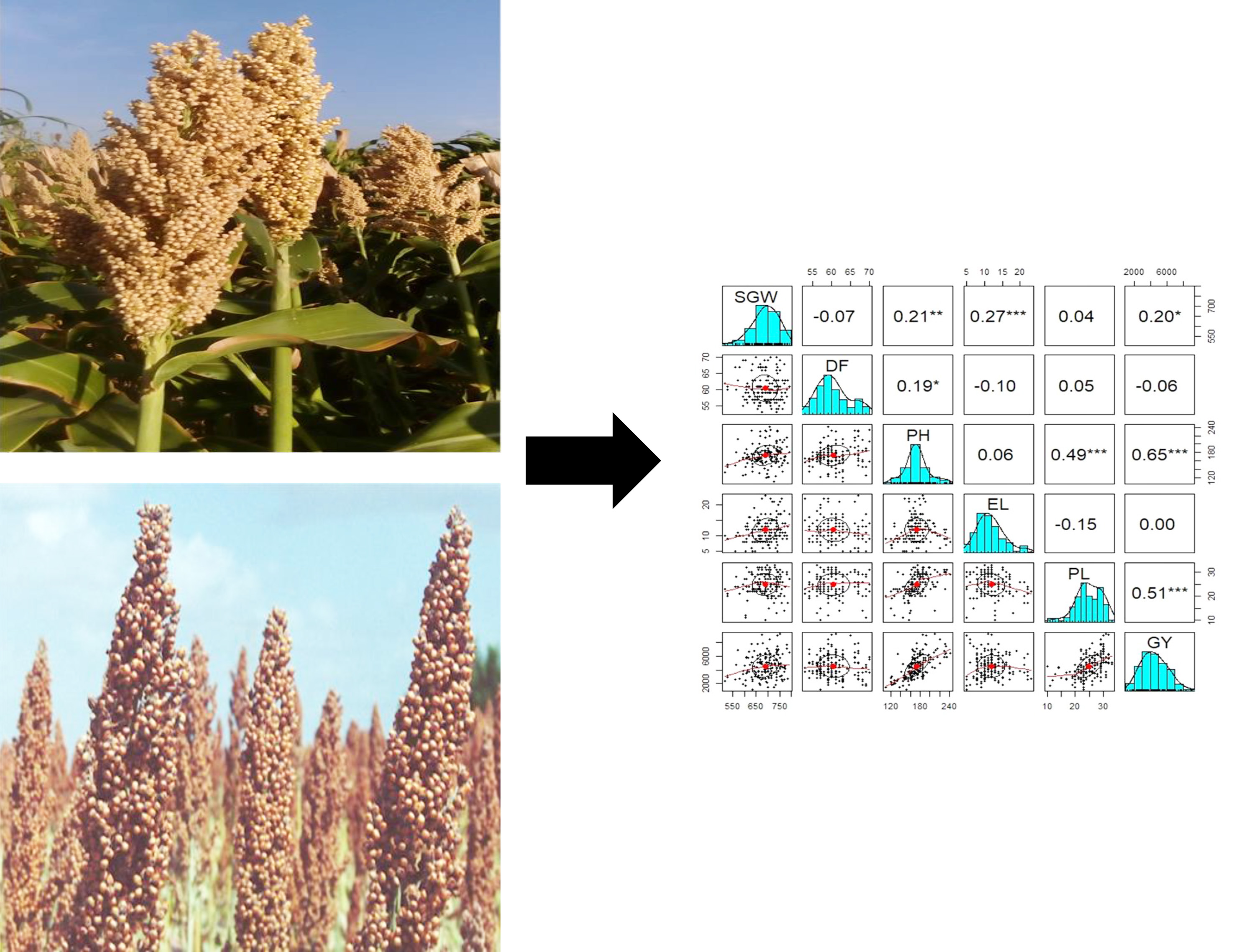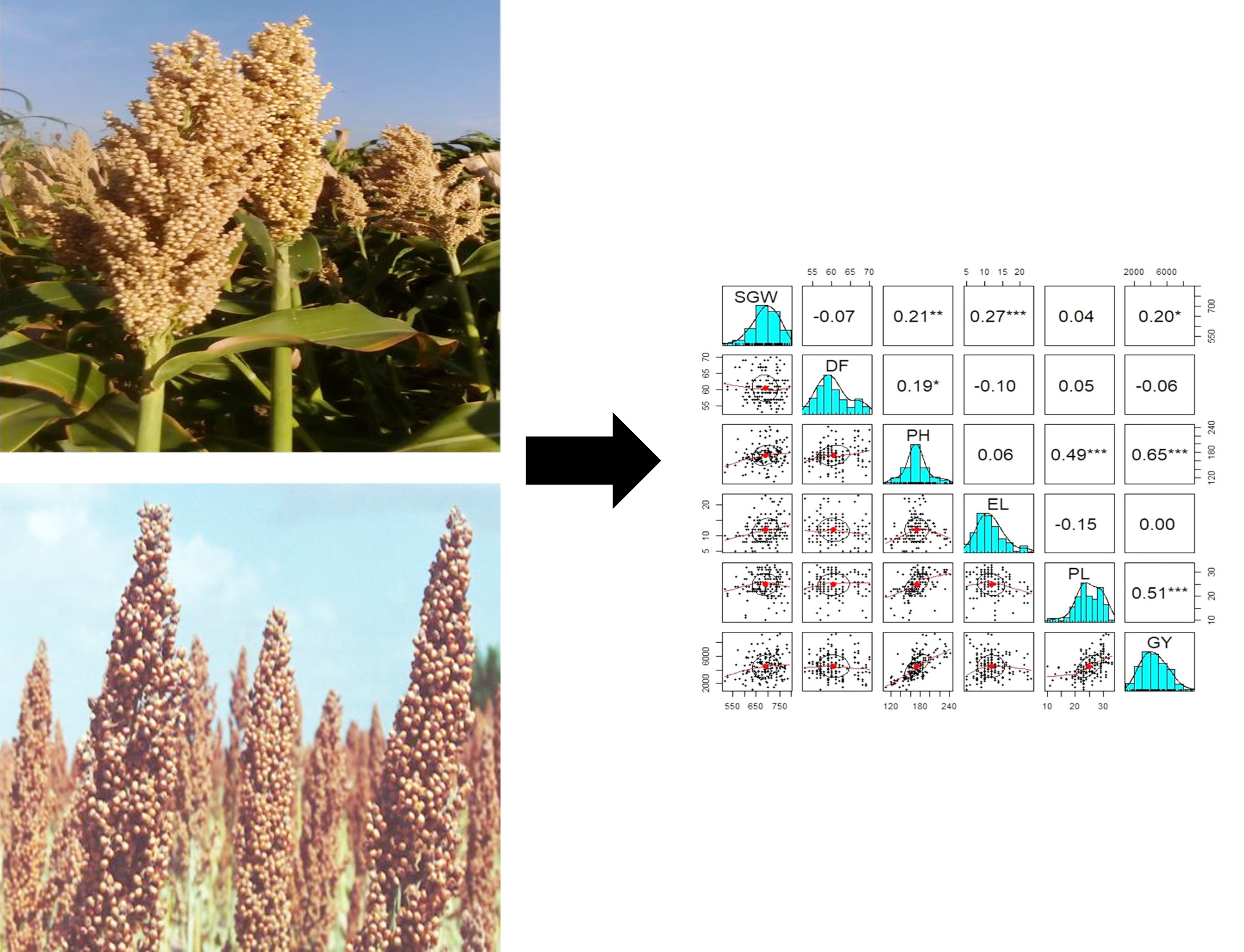Line x tester analysis to estimate combining ability in grain sorghum (Sorghum bicolor L.)
DOI:
https://doi.org/10.48162/rev.39.078Keywords:
Sorghum bicolor L., plant breeding, hybrids, parental lines, grain productionAbstract

Sorghum in Mexico ranks third in grain production. This study aimed to estimate general combining ability (GCA) and specific combining ability (SCA) for commercial and experimental sorghum grain parents and hybrids. The combining ability was estimated using the line x tester method described by Kempthorne. The experiment was established during the spring-summer 2018 cycle at INIFAP, Las Huastecas, México. It consisted of five lines, eight testers and 40 hybrids; in a randomized block design with three replications. The ANOVA showed highly significant differences for lines, testers, and line x testers, suggesting the existence of a broad base of genetic variability. GCA and SCA differences were statistically significant for grain yield, specific grain weight and plant height, indicating additive gene relevance, dominance and epistasis. For grain yield, the experimental lines: RB214A, RB225A and RB248A, and the testers RB133 and RB221, resulted significantly higher in GCA and superior to commercial RB225A line and RTx430 and RTx437 testers. Seventeen experimental hybrids were found to have significantly higher in SCA and were superior to INIFAP commercial hybrids.
Highlights
- The combining ability was estimated using the line x tester method in grain sorghum; General Combining Ability (GCA) and Specific Combining Ability (SCA) were important for grain yield, grain specific weight and plant height.
- GCA and SCA differences were statistically significant for grain yield, specific grain weight and plant height, in grain sorghum, indicating additive gene relevance, dominance and epistasis.
Downloads

Downloads
Published
How to Cite
Issue
Section
License
Copyright (c) 2022 Revista de la Facultad de Ciencias Agrarias UNCuyo

This work is licensed under a Creative Commons Attribution-NonCommercial-ShareAlike 3.0 Unported License.
Aquellos autores/as que tengan publicaciones con esta revista, aceptan las Políticas Editoriales.










.jpg)




